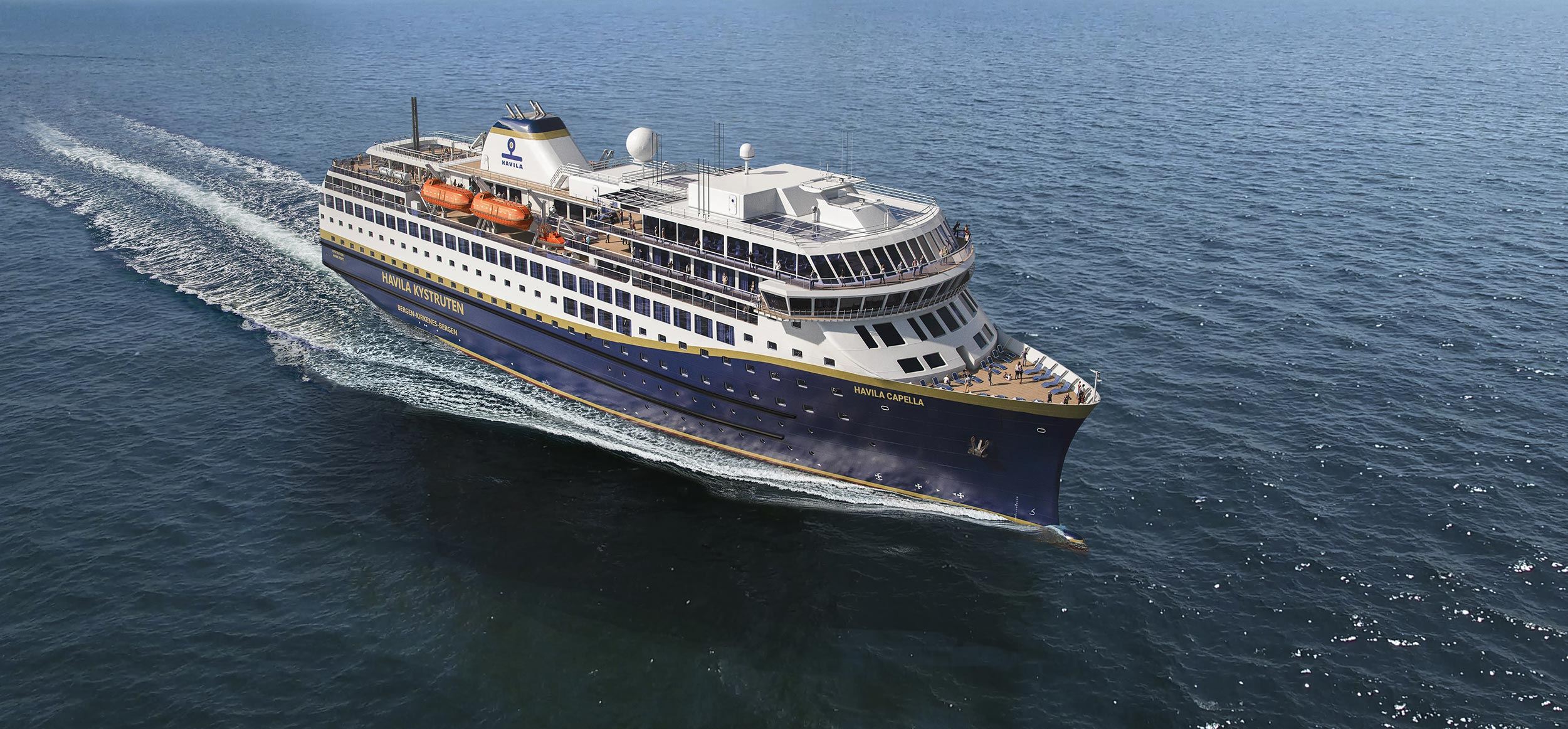The 123-meter Havila Kystruten. Illustration courtesy Havila
Norwegian ship technology group Havyard is moving forward with a project to pilot a hydrogen power system for use on board large ships.
The project, led by Havyard Group with Havyard Design & Solutions and Norwegian Electric Systems, is seeking to develop a hydrogen fuel cell system that will become the biggest of its kind in the maritime industry.
The partners have now entered into signed agreements for hydrogen tanks and fuel cells with Linde Engineering and PowerCell Sweden AB, respectively. The agreements entail the partners will move towards designing a hydrogen solution ready for certification, bringing the project closer to the approval stage.
The ultimate goal is to develop hydrogen power system that is powerful enough to install on board the 122-meter newbuild Havila Kystruten, which is scheduled for delivery in 2021.
“We believe [Linde is] the right partner for finding solutions that will ensure safe storage and control barriers for cryogenic hydrogen on board ships,” says Kristian Osnes, project manager Havyard Group’s FreeCO2ast project. “The regulations for these solutions have not yet been developed, and we are pleased to have Linde on-board when entering the approval process, which we expect to be very challenging.
As for fuel cells, Osnes says that they have similarities with the battery technology that Norwegian Electric Systems has already installed on a number of ferry projects.
“PowerCell’s core technology for fuel cells is well documented through their cooperation with Bosch for the car industry, and we are looking forward to working with them to create the right solutions for the maritime sector,” says Osnes.
“The interaction will provide us with experience to deliver complete hydrogen solutions for several types of ships. The system we are developing is designed in modules and can be installed both in newbuilds and retrofitted in existing ships. In this way, we will contribute to development of large-scale vessels that can sail emission free over long distances, or significant emission cuts from vessels that use hybrid propulsion systems,” Osnes concluded.

 Join The Club
Join The Club











